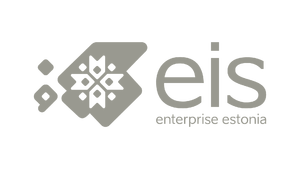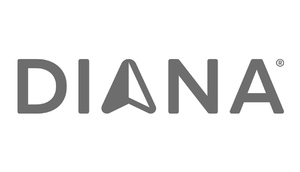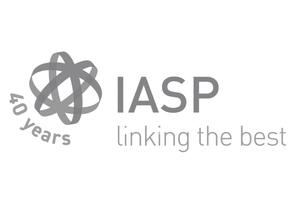22.05.2017
Diagnostic Match makes HIV testing more targeted
Diagnostic Match is a decision-making support platform for primary care providers that automates the process of detecting whether a patient falls into an HIV risk group. The solution looks at other conditions to flag patients who are at risk for HIV so that they can be tested as early as possible.
“The solution consists of a digital decision-making platform that helps find HIV-positive patients through indicator diseases,” says Diagnostic Match project manager Grete Kikas in introducing the idea. The system looks for illnesses that are co-morbid with HIV, such as hepatitis B and C, herpes zoster, fungal infections, recurrent lung infections, tuberculosis and others, and helps general practitioners to make the decision on whom to test for HIV.
The idea for Diagnostic Match originated with the Estonian Society of Family Doctors, which also collaborated on developing the solution. “One key to our success is that we have developed very good synergy between the team and our partners in cooperation,“ says Kikas. “The Society of Family Doctors has provided very good input – the whole project evolved out of their needs. I feel we’re doing something really good that will actually help resolve a problem.”
Finding HIV risk group in a matter of seconds
Kikas says that during the pilot project, they noticed that it took general practitioners seven minutes to gather the information needed to find HIV-positive people on the basis of indicator conditions. “Appointments with general practitioners only last ten minutes and if they spend seven minutes of that time dealing with the HIV topic, that steals an awful amount of time away,” says Kikas. “So we’re trying to automate the process so that it would be a matter of seconds, as easy and routine as possible.”
Kikas emphasizes that decision-making support has to be integrated into the existing system. “If it were in the form of a separate app, it’s very likely that doctors won’t find the time to use it. But if it’s on their own desktop, they will be aware of it and there’s no barrier with regard to the ability to use it,” she says.
In this manner, digital algorithms have been developed to allow patient health records to be automatically pulled from the health information system. This shows any indicator conditions and whether the patient has previously been tested for HIV. If the algorithm finds that the patient has been diagnosed as having an indicator condition, the physician will be shown a recommendation that HIV testing be considered.
From idea to prototype
The first step in developing the system was to map the need in collaboration with GPs.
For years, Estonia has been among the world’s countries with the fastest spread of HIV. According to the Estonian Health Board, more than 9,475 people have been diagnosed with HIV, while the number of those infected is thought to be as high as 12,000. About 25 new HIV cases per 100,000 inhabitants are registered each year in Estonia compared to an average of 6 new cases in Europe as a whole.
“Many people don’t know they carry the virus and general practitioners don’t know whom to test. About 50% of people get their HIV diagnosis too late in the game. Physicians must be made more aware of the necessity of HIV testing,” says Kikas.
She adds that they hope the solution will also lessen the stigma associated with HIV. She explains that it’s often assumed people living with HIV are drug abusers or sex workers, yet in fact HIV positive people can also be ordinary schoolteachers. “During the brief appointment, general practitioners don’t consider that the schoolteacher might already have been diagnosed with some indicator condition which based on treatment guidelines, means that they should be tested for HIV.”
Furthermore, because of the stigma associated with HIV, it’s frequently awkward for doctors to ask whether a patient falls into a risk group. “But if the information is automatically displayed on their screen, that part of the job has been done, because the patient is already in a risk group.”
Once the need was mapped and the idea committed to paper, Diagnostic Match took part in the HIVdigital competition held in Estonia, which is focused on problems related to HIV. A hackathon held as part of HIVdigital yielded a prototype that was functional in practice and in the final round of the competition, Diagnostic Match was selected from among five projects as the winner. The prize was 40,000 euros of seed capital for developing the digital solution.
Awaiting new challenges
“We’re currently in a phase where we have a working prototype and are starting to work on a real product in March,“ says Kikas. “I’d like the product to be operational in practice by June 2017.”
At the moment, a solution is being developed for the Estonian market. “We started with GPs, but we’ve got to the point that there’s actually demand for the product from other healthcare workers and specialities. When a person has dealings with the healthcare system, the given doctor, nurse, occupational health physician, or gynaecologist should already see a notification if a patient has been diagnosed with specific indicator conditions and the treatment guidelines recommend that HIV testing be considered. We’ve talked with professional associations a great deal and they, too, see that they need this tool and HIV testing reminders based on previous diagnoses,” says Kikas.
In the future, the Diagnostic Match team plans to develop algorithms for foreign markets as well. The Finnish and Danish medicine markets are being eyed. “It will be a completely new challenge as to how to get the algorithm working elsewhere. We are looking forward to meeting the challenge, because there’s a need for it,” says Kikas.

















